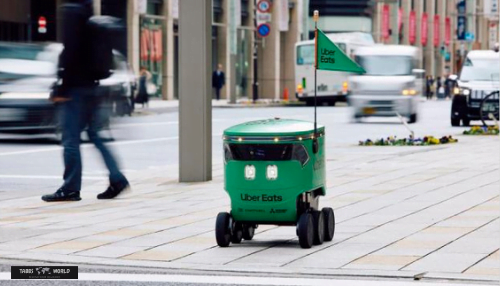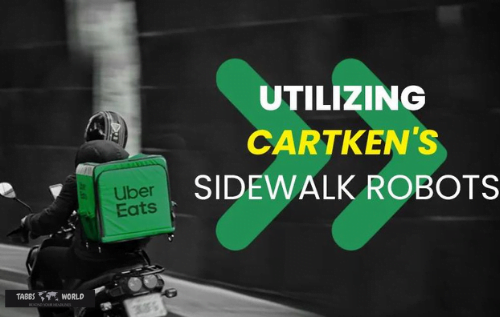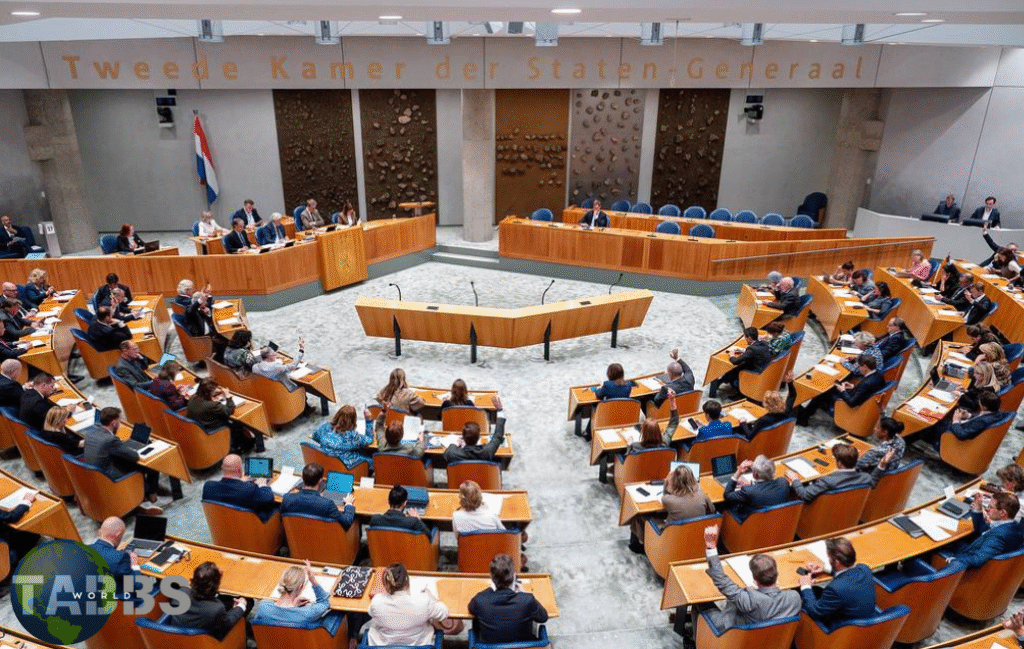In a move designed to redefine the food delivery landscape, Uber Eats has embarked on an exciting journey in partnership with Cartken, a leading provider of robotic delivery solutions. This groundbreaking partnership introduces sidewalk robots as the latest innovation in the delivery industry’s quest to increase efficiency and convenience. As these futuristic robots prepare to navigate the bustling streets of Japan, the implications of this collaboration are far-reaching, promising to revolutionize the way we think about food delivery.
Evolution of delivery services:

Over the years, delivery services have undergone a remarkable transformation, driven by advances in technology and changing consumer expectations. What was once a simple transaction involving a phone call and a delivery driver has evolved into a sophisticated ecosystem of mobile apps, GPS tracking, and on-demand services. As consumers demand faster, more convenient delivery options, companies like Uber Eats have been at the forefront of innovation, finding new ways to meet these evolving needs.
Introducing Kartkin’s Sidewalk Robots:
At the heart of this revolution is Kartkin, a pioneer in the field of robotic delivery technology. With a mission to revolutionize the last-mile delivery process, Cartkin has developed a fleet of sidewalk robots designed to autonomously navigate urban environments and deliver goods directly to customers’ doorsteps. has gone These sleek, futuristic robots are equipped with advanced sensors and cameras, allowing them to safely navigate city streets, avoid obstacles and interact with pedestrians.
Partnership with Uber Eats:

Recognizing the potential of Cartkin’s sidewalk robots to transform the delivery industry, Uber Eats has formed a strategic partnership with the company to launch a pilot program in Japan. Under the partnership, Uber Eats will integrate Cartkin’s robots into its existing delivery infrastructure, providing customers with a faster, more efficient delivery experience. Leveraging the capabilities of Cartkin’s robots, Uber Eats aims to improve customer satisfaction while optimizing its logistics operations.
Benefits for consumers:
The introduction of sidewalk robots promises many benefits for consumers. With the ability to autonomously navigate sidewalks and streets, these robots offer a faster, more reliable delivery option than traditional delivery methods. Customers can track their orders in real-time, knowing when their food will arrive. Additionally, the use of robots reduces the need for human delivery drivers, potentially lowering delivery costs and making food delivery more accessible to a wider range of consumers.
Benefits for Businesses:
the partnership between Uber Eats and Cartken presents exciting opportunities to improve efficiency and reduce operational costs. By incorporating robotic delivery solutions into their operations, businesses can streamline the delivery process, minimize delivery times, and increase order accuracy. Additionally, the use of robots can help businesses meet the growing demand for delivery services while freeing up human resources to focus on other aspects of the business.
Challenges and considerations:

While the partnership between Uber Eats and Cartken holds great promise, there are challenges and concerns that must be addressed. One of the primary concerns is ensuring the safety and reliability of autonomous delivery robots, especially in densely populated urban environments. Robotic delivery solutions must be equipped with advanced navigation systems and collision avoidance technology to safely navigate city streets and avoid accidents.
The future of delivery:
As the pilot program begins in Japan, the world will be watching closely to see how this innovative partnership unfolds. If successful, it has the potential to revolutionize the delivery industry not only in Japan but across the world. With technology advancing at a rapid pace, the possibilities for autonomous delivery are virtually limitless. As sidewalk robots become a common sight on city streets, the way we think about food delivery will change forever.
Result:
The partnership between Uber Eats and Cartken represents a bold step in the evolution of the delivery industry. By harnessing the power of robotics and automation, these companies are poised to revolutionize the way we order and receive food. As sidewalk robots prepare to hit Japan’s streets, the future of delivery has never looked brighter. With faster, more efficient delivery options on the horizon, consumers can look forward to a new era of convenience and accessibility in the world of food delivery.
Table of Contents
What is the partnership between Uber Eats and Cartken about?
Answer: The partnership involves the integration of Cartken’s sidewalk robots into Uber Eats’ delivery services in Japan, aiming to enhance the efficiency and convenience of food delivery through autonomous technology.
How do Cartken’s sidewalk robots navigate city streets?
Answer: Cartken’s robots are equipped with sensors, cameras, and navigation systems that enable them to autonomously navigate sidewalks and streets. They use advanced algorithms to plan routes, avoid obstacles, and deliver orders safely.
What benefits do sidewalk robots offer for food delivery?
Answer: Sidewalk robots offer faster delivery times, improved efficiency, and reduced delivery costs. They can navigate congested urban environments more effectively than traditional delivery vehicles and operate 24/7, providing customers with greater convenience.
Are sidewalk robots safe to use in urban areas?
Answer: Yes, sidewalk robots are designed with safety features such as collision avoidance technology and emergency stop mechanisms to ensure safe operation in urban environments. They undergo rigorous testing and comply with safety regulations before deployment.
Will sidewalk robots replace human delivery drivers?
Answer: Sidewalk robots may complement traditional delivery services, but they are not intended to replace human drivers entirely. Human drivers may still be needed for tasks that require human interaction or deliveries to locations inaccessible to robots.
How will customers interact with sidewalk robots when receiving their orders?
Answer: Customers will receive a notification on their smartphones when the robot arrives with their delivery. They can then approach the robot, unlock the compartment containing their order using a unique code, and retrieve their items.
What measures are in place to ensure the security of deliveries made by sidewalk robots?
Answer: Sidewalk robots have secure compartments to protect deliveries during transit. They also use encryption and authentication protocols to ensure that only authorized individuals can access the contents of the compartments.



